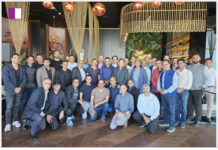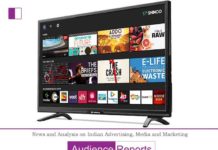The study delves into the world of gamers sentiment and offers a detailed exploration of how diverse gamer demographics perceive sponsored in-game experiences
In-game advertising experience platform Monetizr released a comprehensive two-tiered survey of more than 200,000 mobile gamers.
The study delves into the world of gamer sentiment and offers a detailed exploration of how diverse gamer demographics perceive sponsored in-game experiences.
The survey, which first engaged more than 207,000 respondents about demographic data and then asked 3,000 of those gamers a set of questions based on sentiment toward in-game advertising, revealed intriguing patterns and behaviours that can assist brand marketers in enhancing their strategies for engaging and retaining customers.
Players and Playing Habits:
Demographics: The study highlights a significant shift in mobile gaming demographics, challenging traditional stereotypes. A noteworthy 43% of the 207,000 respondents belonged to the Boomer or GenX age groups, while 40% were from the GenZ and younger cohorts. Millennials constituted 17% of the mobile gaming community. 51% of the 207,000 identified themselves as female.
The Playing Habits: Mobile gaming is a powerhouse media channel, with 31.43% of respondents confessing to playing for five hours or more daily. 60% of respondents play between two and four hours per day, while 30.27% of gamers dedicate up to one hour to their favourite games, demonstrating a widespread appeal across varied playing durations.
“This type of engagement presents advertisers with an extraordinary,” said Andris Merkulovs, Cofounder and CEO of Monetizr, noting that mobile gaming, with 3.2B players worldwide, is now one of biggest media channels, even bigger than social and streaming media. “In today’s dynamic advertising landscape, brands are directing their attention towards the significant opportunities presented by the $90 billion mobile games ad market.”
The Right and Wrong Way to Get Mobile Gamers’ Attention (3,000 respondents)
There are 3.2 billion mobile gamers worldwide and many are open to certain in-game ad integrations as long as they enhance the journey rather impede it.
The survey data also provides insights into player preferences concerning in-game advertising in mobile games. Surprisingly, a substantial portion of respondents (49.28%) indicated that the placement of ads, whether integrated into gameplay or kept separate, didn’t significantly impact their gaming experience.
Meanwhile, 26.17% of participants favoured ads seamlessly woven into the gameplay, becoming an integral part of the action. In contrast, 24.55% of respondents preferred advertisements to be distinct from their gaming experience, emphasising the importance of maintaining a separation between gameplay and promotional content. These diverse preferences highlight the intricate balance needed when integrating advertising into the mobile gaming industry.
Show Me the Money
Mobile gamers exhibit a strong inclination to engage with in-game ads offering tangible benefits.
44.86% of respondents expressed their willingness to redeem real-world rewards or discounts when presented through mobile game ads. In contrast, 15.2% firmly stated that they would never respond to such offers, while the remaining respondents indicated a need for further consideration.
In the context of Free-to-Play (F2P) games and their inclusion of ads for monetization, a relatively small percentage (15.68%) would consider ceasing gameplay if publishers continued to utilize ads. Conversely, 44% of players would continue their gameplay, with 19.57% of them noting their likelihood to click on the ads for further exploration.
In terms of ad integrations, the survey underscores gamers’ versatility in their preferences for ad integration. A significant 28.15% emphasize that whether an ad is seamlessly “Part of the action” or “Separated from game experiences” doesn’t matter. This adaptability offers advertisers the flexibility to tailor their strategies to specific gaming environments.
Furthermore, 28.65% favour the immersive “Reward center experience” over all other available formats, showcasing the potential for innovative ad experiences.
The survey has illuminated the evolving landscape of gamer sentiment and preferences toward in-game advertising. As brands pivot toward the $90 billion mobile games ad market amid shifting digital dynamics, it’s evident that mobile gaming, with its 3.2 billion players worldwide, has emerged as a major media channel.
The study highlights the delicate balance required for ad integration, catering to diverse preferences in ad placement, while also revealing gamers’ responsiveness to ads offering real-world rewards. Furthermore, gamers’ adaptability in embracing various ad integration formats underscores the flexibility for advertisers to customize their strategies. These insights are invaluable for brand marketers navigating this dynamic landscape, where mobile gaming’s influence on the advertising sphere is rapidly growing.





































